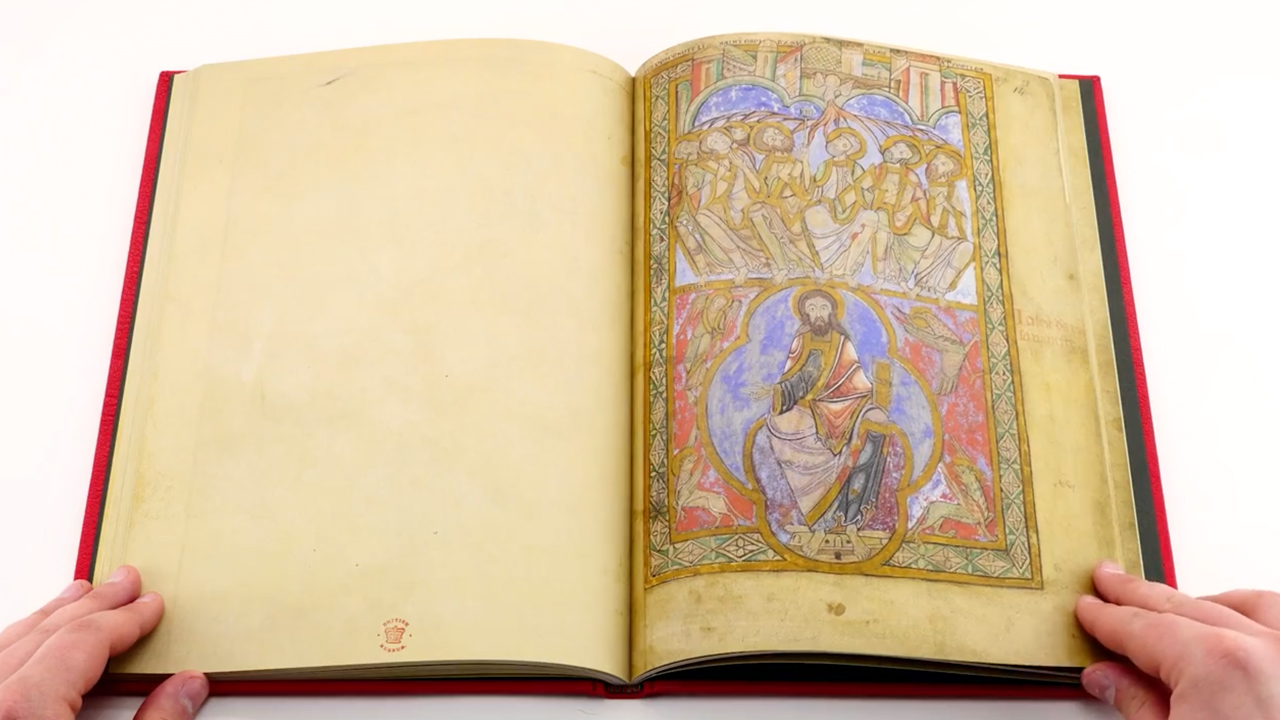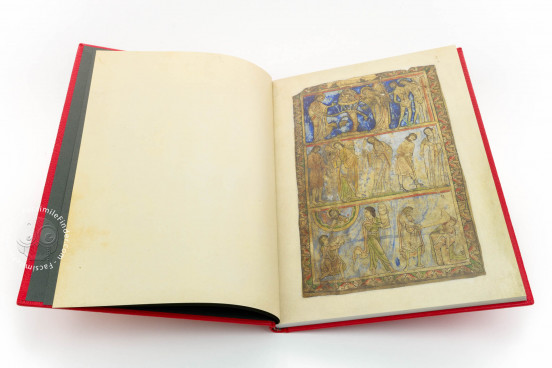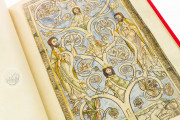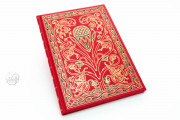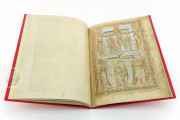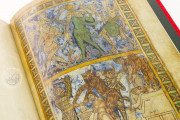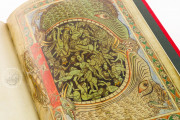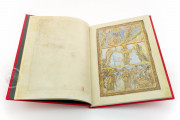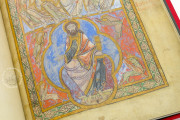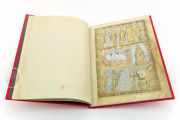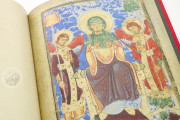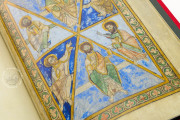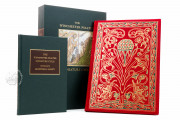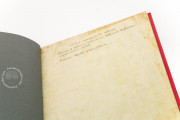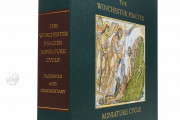Made in the mid-12th century, the Winchester Psalter is named for its place of production, Winchester Cathedral. The book is also known as the Psalter of Henry of Blois, the bishop of Winchester and the likely patron of the manuscript. The large book is a fine example of the revival of the Anglo-Saxon ink-and-wash technique in Romanesque England.
A cycle of thirty-eight full-page illuminations provides detailed illustrations of selections from scripture, most arranged in multiple horizontal registers populated with expressive figures and simple scenery. The calendar has additional illuminations of the Labors of the Months and the zodiac. Use of gold is restricted to the miniatures’ frames and details such as halos and crowns.
The illustrations, which begin the book, are followed by several texts for private devotion including a calendar, a Gallican version of the Psalms, ten collections and three dozen prayers. The text is presented in two columns, the left being the Old French translation of the Latin on the right. It is a book rich in pictorial and textual content, a work that preserves clues about the philosophy and religious practice of one of the key players in a tumultuous time of English history.
The History of the World in Pictures
The first twenty folios are devoted to illustrations from biblical history from the Creation of Adam to the Last Judgment. After a detailed cycle of the Life of Christ is a two-page spread called the “Byzantine Diptych” due to its distinctive style quite different than that of the rest of the book. Original to the manuscript’s production, these icon-like images may have served as a pause in the narrative to contemplate the present before continuing to the vision of an apocalyptic future.
The final image is the remarkable Angel Locking the Doors of Hell. The monstrous Hellmouth yawns wide showing within the suffering souls and their torturing demons. Outside the frame, an angel seals their fate on the other side of a red door. Thus the world ends.
Two Versions of One Book
The text is presented in two-columns over forty lines. The main content is in Latin, however most has a corresponding line-for-line Old French translation. The English Protogothic script is written in black ink with occasional rubrication. Alternating red, green, and blue initials begin each verse. Contrasting pen flourishes, a slightly later addition, are limited to larger chapter initials. Each illustration is also captioned in Latin and Anglo-Norman French.
A British National Treasure
Likely made for the personal use of Winchester’s bishop, Henry of Blois, brother of King Stephen and grandson of William the Conqueror, the Winchester Psalter was kept at Shaftsbury abbey for several centuries. It came into the collection of Sir Robert Cotton, appearing in the 1638 catalog. It survived the fire of 1731, though the damage incurred caused the pages to be foliated incorrectly, and is now housed in the British Library.
We have 1 facsimile edition of the manuscript "Winchester Psalter": The Winchester Psalter facsimile edition, published by The Folio Society, 2015
Request Info / Price
